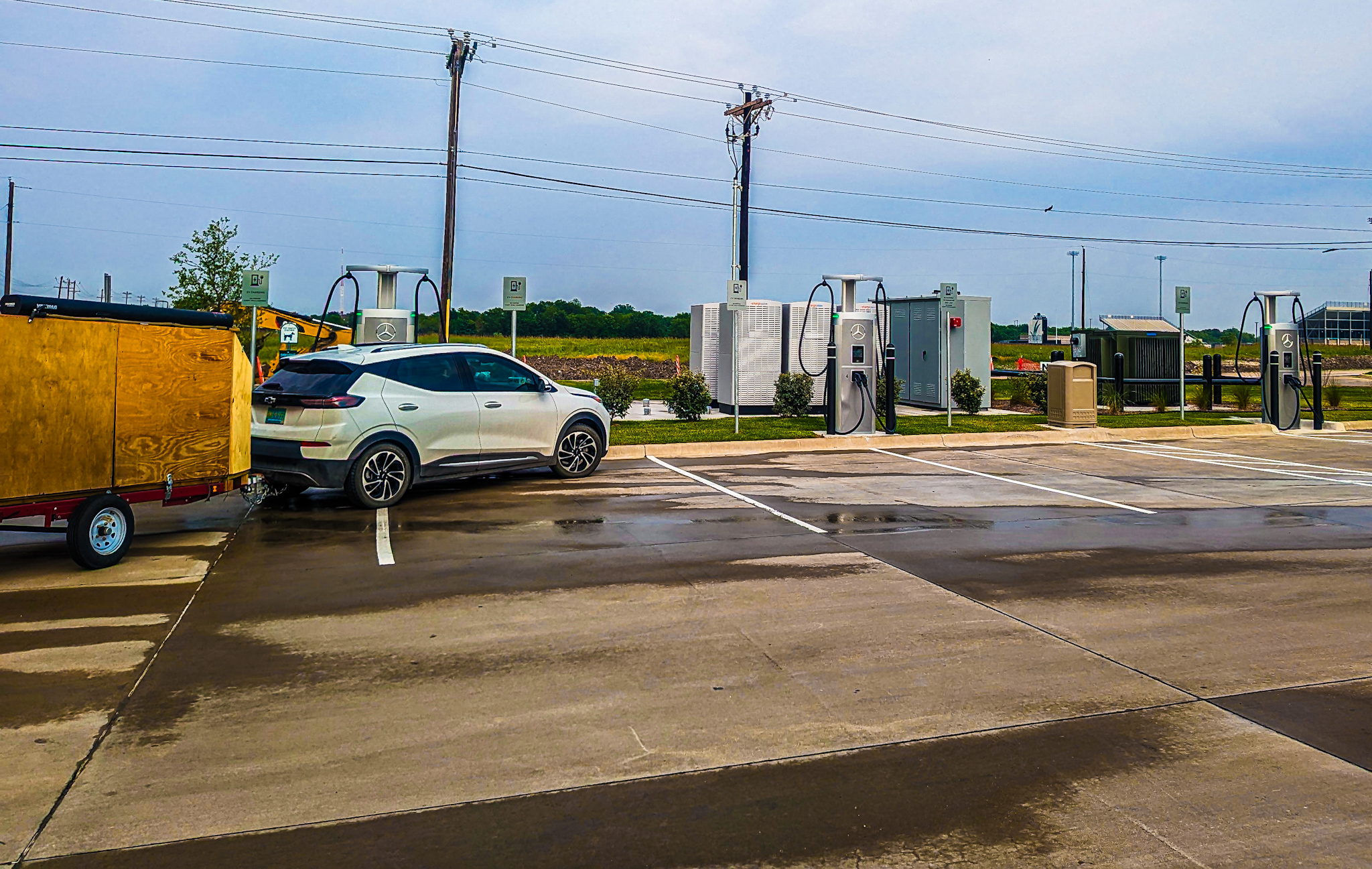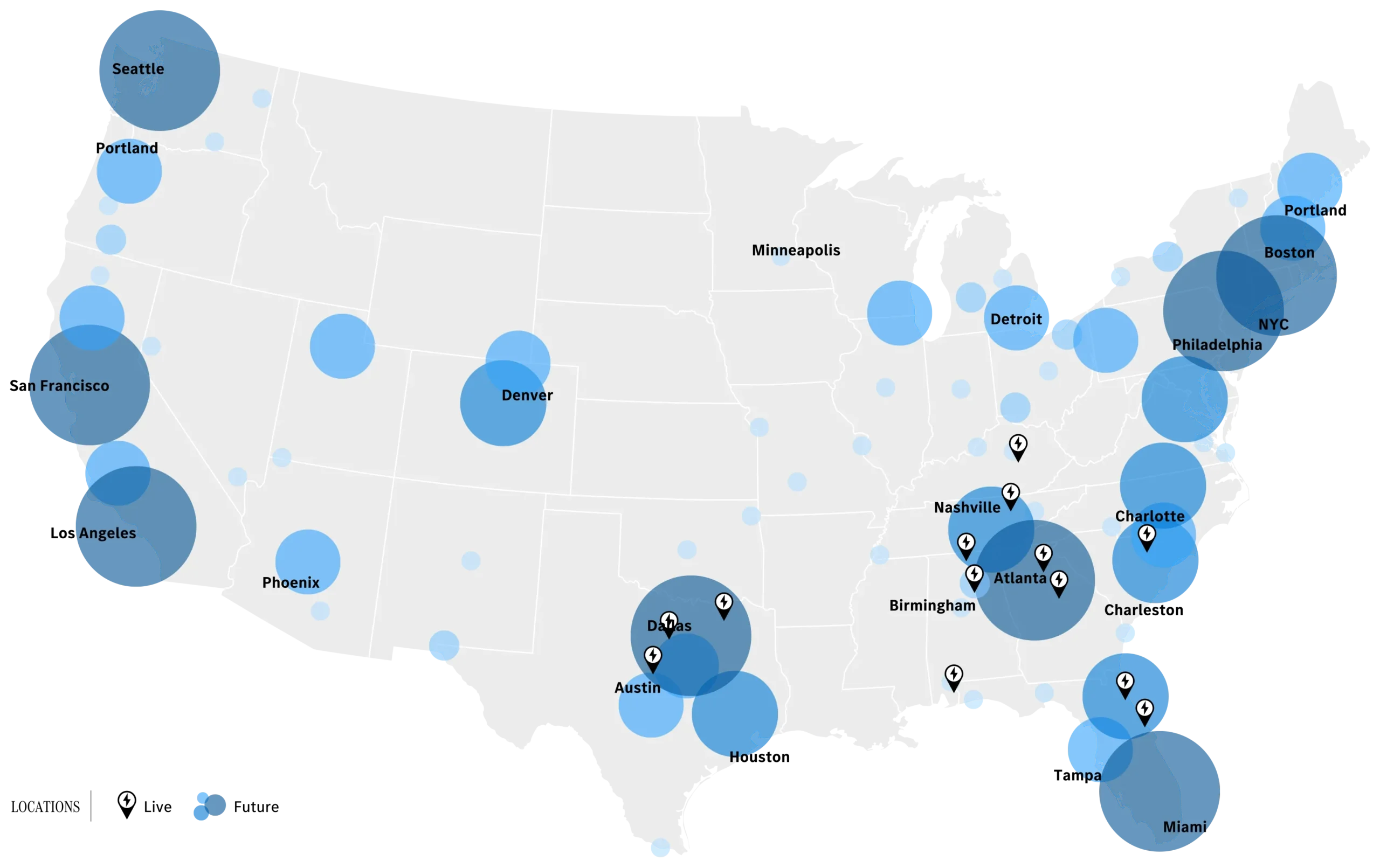
Sign up for daily news updates from CleanTechnica on email. Or follow us on Google News!
Mercedes-Benz, like a number of other manufacturers, figured out over the past few years that relying on charging companies and government to power electric vehicles wasn’t going to work out.
This, of course, flies in the face of what car manufacturers have always done. It was their job to build the cars and provide warranty repair money, and it was the job of dealers to do the final sale and perform the repairs. It was then the job of oil companies and gas station owners to take care of powering them. The idea at first was to continue this arrangement, even if those weirdos at Tesla were trying to do it all. Change sucks, right?
But, once a bunch of EVs started appearing on the roads, the problems with relying on charging companies became apparent. Home charging (at least for people with a garage or driveway) wasn’t a problem, but non-Tesla EV charging stations weren’t holding up under the stress of increasing use, especially in California and along the busiest interstate highways.
Facing this dilemma, manufacturers figured out that they’d need to do two things. First, they were going to need to join the Tesla charging network. This meant paying Tesla billions, agreeing to change the charging plug, and otherwise getting ready to charge at the only stations that seemed to be working well at the time. But, in the long run, manufacturers would need to contribute to reliable charging with their own charging companies.
Different companies are going about this in different ways. Seven manufacturers (BMW Group, GM, Honda, Hyundai/Kia, Mercedes-Benz Group, and Stellantis) teamed up to start iONNA, a charging network that’s just getting off the ground with more reliable European charging hardware at charging stations with better amenities than most. GM, outside of the iONNA effort, is working with EVgo to build charging stations, many at Pilot/Flying J truck stops.
Mercedes-Benz is working on its own charging network by partnering with ChargePoint. The goal is to eventually build 400 of these stations, each with decent amenities, safety, and great lighting. But, most importantly, the goal is to make sure they’re reliable and work well when people need a charge.
I got a chance to use one of the first Mercedes-Benz charging stations a few months ago east of Dallas, Texas (Royse City, to be specific) at a buc-ee’s travel center.
As promised, it was reliable and the location felt pretty safe. Buc-ee’s always has a great set of amenities, including bathrooms, food, drinks, etc. All in all, the experience was a positive one, and other than the fact that the number of stalls was somewhat limited, the Tesla Supercharger station across the parking lot doesn’t do any better. If you have a car that can pull more than 250 kW or prefers 800-volt charging, it’s the better place to go for now.
But, as good as these stations are, Mercedes-Benz hasn’t really told us where we can expect more of these to pop up, at least until now.
A New Map On The Website
Recently, the company’s website had a new map appear on this page, showing us where the current stations are and, more importantly, where Mercedes would like more of them to be built!
Of course, the map isn’t very specific, other than about where the current stations are. Circles, with the smaller ones being lighter and the larger ones being darker, indicate where the upcoming stations are supposed to be. My guess is that the company will be putting a greater number of stations in where the big, dark circles are, while focusing on putting in as little as one station for the smaller circles, which would make sense.
Looking at the map, it’s clear that Mercedes wants to focus on cities, and more specifically the largest metro areas. If you look at a list of the largest cities in the United States, this map has them all covered. New York and Philadelphia are covered by huge circles, and smaller circles cover the whole Northeast Megaregion from Boston to Washington. Los Angeles (the #2 metro by population) is also well covered, as is much of California (where many of the EVs are). Dallas and Houston (both top ten cities) are covered, as well as the rest of the Texas Triangle. Atlanta and southern Florida also get big circles.
This is a good approach, as cities need a lot of public charging for EVs to really work out. Commercial vehicles, rideshare vehicles and taxis, and public vehicles all need places to charge during downtime. People who don’t have driveways or garages with charging will also need to charge, but that’s a problem that needs to be solved, as home charging is the best approach to EVs. People who drove an unusual amount in a day and simply need a few more miles to finish the grocery getting and other errands will also put a lot of demand on EV charging.
But just because Mercedes is spending a lot of money on urban charging doesn’t meant that rural areas and interstates between the cities are getting no attention. Covering specific corridors doesn’t seem to be a priority, as you don’t really see any rows of dots that follow those highways, except for the notable exception of the I-44 corridor. In most other cases, Mercedes seems to be focusing on getting mid-sized cities along these interstate routes, like Brownsville, El Paso, and Albuquerque.
All this having been said, there are some strange things on the map. For one, there are some fairly large metro areas that aren’t getting much attention. Las Vegas is a great example, as is Oklahoma City. Salt Lake City is getting more than minimum attention, but is still getting as much attention as Chicago (the #3 city in the United States). Memphis, Tennessee, isn’t a major city, but it’s getting less attention than El Paso. I’m sure that Mercedes-Benz has some good reasons for all of these things, but nobody else has been told.
Fortunately, nobody is going to be expected to rely on the Mercedes-Benz network exclusively. The company seems to be looking for places where help in charging is actually needed and not trying to be everything to everyone.
Featured image from the Mercedes-Benz website (fair use).

Chip in a few dollars a month to help support independent cleantech coverage that helps to accelerate the cleantech revolution!
Have a tip for CleanTechnica? Want to advertise? Want to suggest a guest for our CleanTech Talk podcast? Contact us here.
Sign up for our daily newsletter for 15 new cleantech stories a day. Or sign up for our weekly one if daily is too frequent.
CleanTechnica uses affiliate links. See our policy here.
CleanTechnica’s Comment Policy





